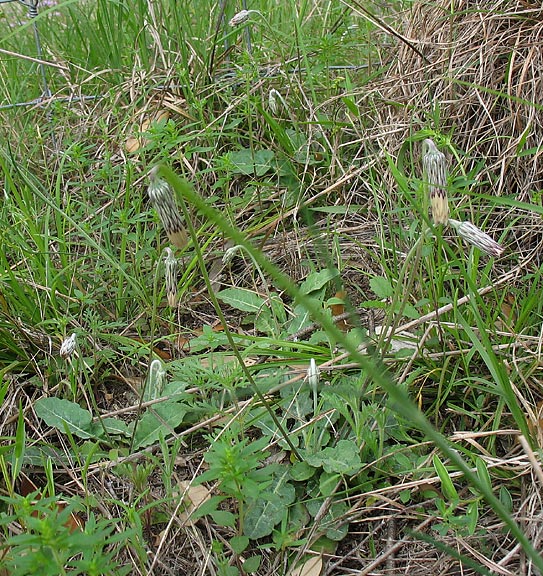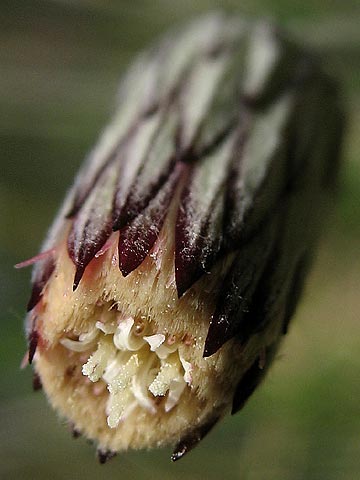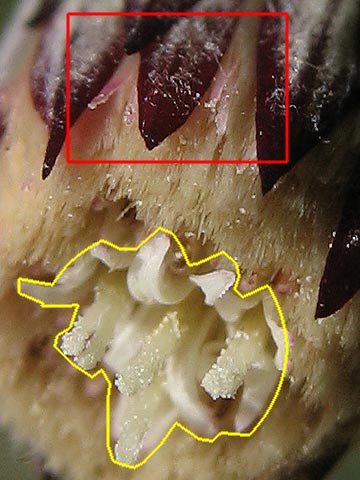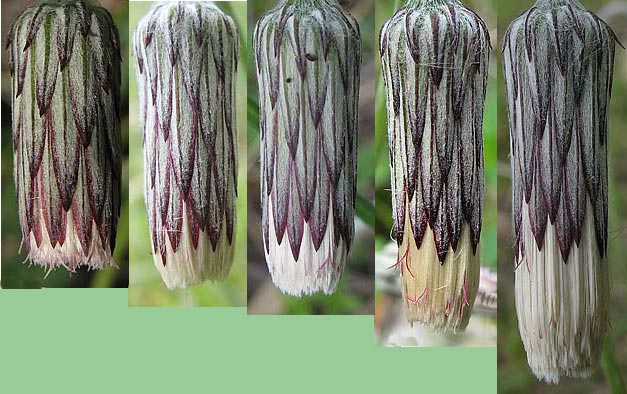


In a small valley on Purola Preserve with a creek that enters Deadman's Creek all plants examined were of Type III, easily recognized by the lack of apparent ligulate flowers. Initially I had concluded, even after preliminary microscope inspection of the florets within the pappus, that this type lacked ligulate flowers (and was thus bimorphic).





Counts of all florets from type III heads at different locaations showed:
| count 1 | count 2 | count 3 | averages for 3 counts of type III heads |
|
|---|---|---|---|---|
| reduced ligulate, pistillate | 16 | 15 | 22 | 18 |
| eligulate, pistillate | 40 | 40 | 38 | 39 |
| central perfect | 12 | 12 | 13 | 12 |
| total: | 68 | 67 | 73 | 69 |
The mouth of the tightly closed involucre at anthesis is shown below. The style branches visible only at the very periphery, against the phyllaries, [red box] are from the hightly reduced ligulate florets. The perfect central florets, with style branches exerted, are within the yellow area. The styles of the eligulate pistillate florets in between are largely concealed by the pappus, although a few pink tips are visible.


As a head develops the achene beaks elongate, pushing the florets and pappus out from the involucre. The follwing image illustrates 5 stages in this process. [Click on a head to view enlargement of that head.]
